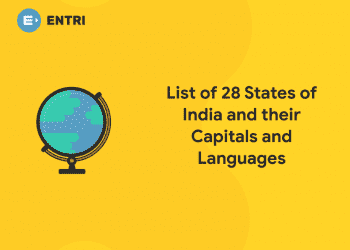Table of Contents
Key Takeaways:
- split() breaks strings into lists based on separators; defaults to whitespace.
- maxsplit controls max splits; list length ≤ maxsplit + 1.
- split() returns a new list, leaves original unchanged.
- Exact separators matter; watch out for empty strings and consecutive delimiters.
- Ideal for text parsing, small data extraction, and string manipulation.
Introduction
Imagine you’re reading a sentence and need to pick out each word separately. Whether handling data, processing user input, or parsing files, breaking down large pieces of text into manageable parts is a common necessity. Python’s split() function offers a simple, powerful way to do just that — splitting strings into smaller parts based on delimiters like spaces, commas, or custom characters. This becomes vital when working with data extraction, text analysis, and automation.
If you’ve ever tried to manipulate sentences, CSV files, or log entries, mastering split() can save you hours and headaches. It’s a foundational skill for beginner and advanced programmers alike. This guide walks you through everything about Python’s split() method — syntax, parameters, practical examples, edge cases, tips, and FAQs. By the end, you’ll be confident in using split() effectively in your projects.
Understanding the Python split() Function
1: Which of the following data types is immutable in Python?
What is split()?
Python’s split() is a built-in string method that divides a string into a list of substrings based on a specified separator. If no separator is provided, it defaults to splitting by any whitespace (spaces, tabs, newlines). Since strings in Python are immutable, split() returns a new list without modifying the original string.
Syntax:
string.split(separator=None, maxsplit=-1)
- separator (optional): The delimiter at which the string is split. If omitted or None, splitting happens at any whitespace.
- maxsplit (optional): Maximum number of splits to perform. The returned list will contain at most
maxsplit + 1elements. The default of -1 means unlimited splits.
Quick Tip: Think of the separator as your “cutting point” in the string, and maxsplit as how many times you want to cut.
Why Use split()?
- Break long sentences or data lines into manageable chunks.
- Extract words from text input or user queries.
- Parse CSV or delimited files.
- Prepare texts for processing or analysis.
- Reverse engineer strings joined by join().
“Ready to take your Python skills to the next level? Sign up for a free demo today!”
Parameters Detailed
| Parameter | Description |
|---|---|
| separator | Optional delimiter string at which to split. Defaults to any whitespace if None. |
| maxsplit | Optional integer defining maximum splits. Output list size ≤ maxsplit + 1. |
🚀 Start Coding Today! Enroll Now with Easy EMI Options. 💳✨
Gain expertise in Django and open doors to lucrative opportunities in web development.
Start Learning With EMI Payment OptionsGuide to Learning How to Use the Python split() Function
Learning to use Python’s split() function effectively can greatly enhance your programming skills, especially in text processing and data handling. Here’s a step-by-step guide to mastering this essential function:
- Understand the Basics of Python Strings
Before diving into split(), ensure you understand how strings work in Python. Know that strings are sequences of characters and are immutable, meaning they cannot be changed once created. Familiarize yourself with string literals, indexing, and slicing. - Learn the Syntax and Parameters of split()
Study the function signature:
string.split(separator=None, maxsplit=-1)
Understand what each parameter does:
separator: The delimiter to split on, defaults to whitespace.maxsplit: Maximum number of splits allowed.
Experiment with Simple Examples
Start with basic examples where you split strings using the default whitespace separator. Observe how split() outputs a list of words.
sentence = "Python is fun"
print(sentence.split())
Try changing separators to commas, hyphens, or other characters.
data = "apple,orange,banana"
print(data.split(","))
Practice Using maxsplit Parameter
Explore splitting strings but limiting the number of splits. This is valuable in processing strings where only the first few separators matter.
entry = "John,Doe,30,USA"
print(entry.split(",", 2)) # Only split twice
Handle Edge Cases
Test split() on empty strings, strings without the separator, or strings with consecutive separators to understand how the function behaves. This prepares you to handle real-world messy data gracefully.
print("".split()) # []
print("apple".split(",")) # ['apple']
print("a,,b".split(",")) # ['a', '', 'b']
Use split() in Practical Projects
Apply split() in mini-projects such as parsing command-line input, processing CSV data, or breaking down user-generated text. This reinforces learning and reveals common challenges.
Compare split() With Related String Methods
Learn about rsplit(), partition(), and splitlines() for different splitting needs. Understanding their distinctions helps you pick the best tool.
Explore Advanced Splitting
When single separators aren’t enough, explore using Python’s re module with re.split() for splitting strings with multiple delimiters or complex patterns.
Build Your Reference Cheatsheet
Create your own quick-reference guide with examples and notes about split() behaviors, parameters, and common pitfalls.
Continue Learning and Practicing
Keep experimenting and incorporate split() in your daily coding challenges. Use platforms like Entri, where you can find interactive Python courses with AI assistance and placement help to accelerate your growth.
By following this guide, you’ll gain strong practical and conceptual knowledge of Python’s split() function, making string manipulation tasks simpler and more efficient.
Examples with Outputs
-
Splitting by whitespace (default):
text = "Learn Python programming with Entri"
result = text.split()
print(result)
Output:
['Learn', 'Python', 'programming', 'with', 'Entri']
-
Splitting by a comma and space:
data = "apple, banana, cherry, date"
result = data.split(", ")
print(result)
Output:
['apple', 'banana', 'cherry', 'date']
-
Using maxsplit to limit splits:
info = "one,two,three,four,five,six"
result = info.split(",", 3)
print(result)
Output:
['one', 'two', 'three', 'four,five,six']
-
Splitting a string into fixed-length chunks using list comprehension:
text = "abcdefghij"
chunk_size = 3
chunks = [text[i:i+chunk_size] for i in range(0, len(text), chunk_size)]
print(chunks)
Output:
['abc', 'def', 'ghi', 'j']
“Get hands-on with our Python course – sign up for a free demo!”
-
Splitting a string with multiple consecutive separators produces empty strings:
log = "error;;warning;info;;"
result = log.split(";")
print(result)
Output:
['error', '', 'warning', 'info', '', '']
Pro Tip: With maxsplit, you get at most that many splits, so the output list size is maxsplit + 1.
Common Use Cases and Tips
- Use split() without parameters to easily extract words from sentences.
- Ensure your separator matches exactly, including spaces or special characters.
- For CSV parsing, for simple cases, split() is great, but for complex files, consider the csv module.
- Remember split() returns a list — use indexing or loops to access elements.
- Use list comprehensions to split strings into fixed-size chunks if no delimiter is present.
🚀 Start Coding Today! Enroll Now with Easy EMI Options. 💳✨
Gain expertise in Django and open doors to lucrative opportunities in web development.
Start Learning With EMI Payment OptionsEdge Cases and Behavior
- Splitting an empty string by default returns an empty list.
- If a separator is specified but not found, the result is a list containing the original string.
- Multiple consecutive separators produce empty strings in the resulting list.
Comparison With Related Methods
| Method | Description | Use Case |
|---|---|---|
| split() | Splits from the left at separator | General splitting |
| rsplit() | Splits from the right at separator | When last elements matter |
| partition() | Splits into tuple before, separator, after | When you want exactly one split |
| splitlines() | Splits at line breaks | Splitting multi-line strings |
Performance Note: For very large strings, test split() efficiency or consider specialized libraries.
Relevance of Python Developers in 2025
In 2025, Python continues to dominate as one of the most popular programming languages worldwide, and its demand in the job market remains strong. Python’s versatility in web development, data science, artificial intelligence, automation, and scientific computing makes it invaluable across industries. Organizations are investing heavily in automation and data-driven decision making, both areas where Python excels.
Python developers are highly sought after due to the language’s readability, extensive libraries, and robust community support. Mastery of core functions like split() helps developers efficiently process and clean data—a critical skill in analytics and machine learning pipelines. The integration of Python with AI tools and frameworks boosts its relevance further. Whether you aim to build web apps, conduct research, or enhance business intelligence, Python’s popularity assures that investing time to learn its core functions, including split(), is a wise career choice.
Learn Python With Entri’s Comprehensive Course
Want to step up your Python game? Entri’s comprehensive Python Programming Course is designed for learners at all levels. The course offers:
- Interactive lessons with real-world projects.
- AI-powered learning assistance to tailor the experience and provide instant feedback.
- 24/7 support and guidance.
- Placement assistance with resume-building support and interview preparation.
- Lifetime access with easy installment payment options.
Whether you’re starting fresh or looking to enhance your programming skills, this course offers the guidance and tools to help you secure your dream job in tech.
Conclusion
Mastering Python’s split() method is essential for any programmer dealing with text and data processing. It simplifies breaking down strings for analysis, extraction, and transformation. For a deeper learning experience and career-ready skills, enroll in Entri’s Python Programming Course today. Unlock personalized AI learning and real-world project experience to set yourself apart in the job market. Start your Python journey now!
Related Articles
🚀 Start Coding Today! Enroll Now with Easy EMI Options. 💳✨
Gain expertise in Django and open doors to lucrative opportunities in web development.
Start Learning With EMI Payment OptionsFrequently Asked Questions
Can split() handle multiple different separators?
No, split() uses a single separator string. For multiple separators, use regex with re.split().
What if separator is an empty string ""?
Raises a ValueError because zero-length separator is invalid.
Does split() split on tabs and newlines?
Yes, by default it splits on any whitespace, including tabs and newlines.
Is the separator case-sensitive?
Yes, separators are case-sensitive.
How to split a string into fixed-length chunks?
Use a list comprehension:
[text[i:i+chunk_size] for i in range(0, len(text), chunk_size)]















